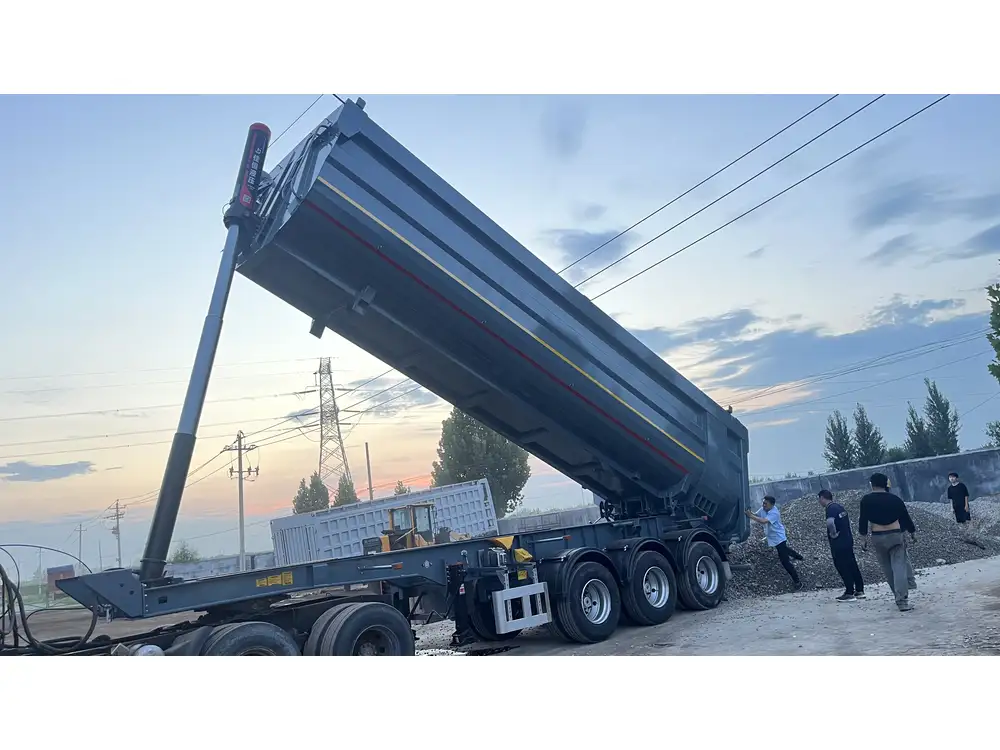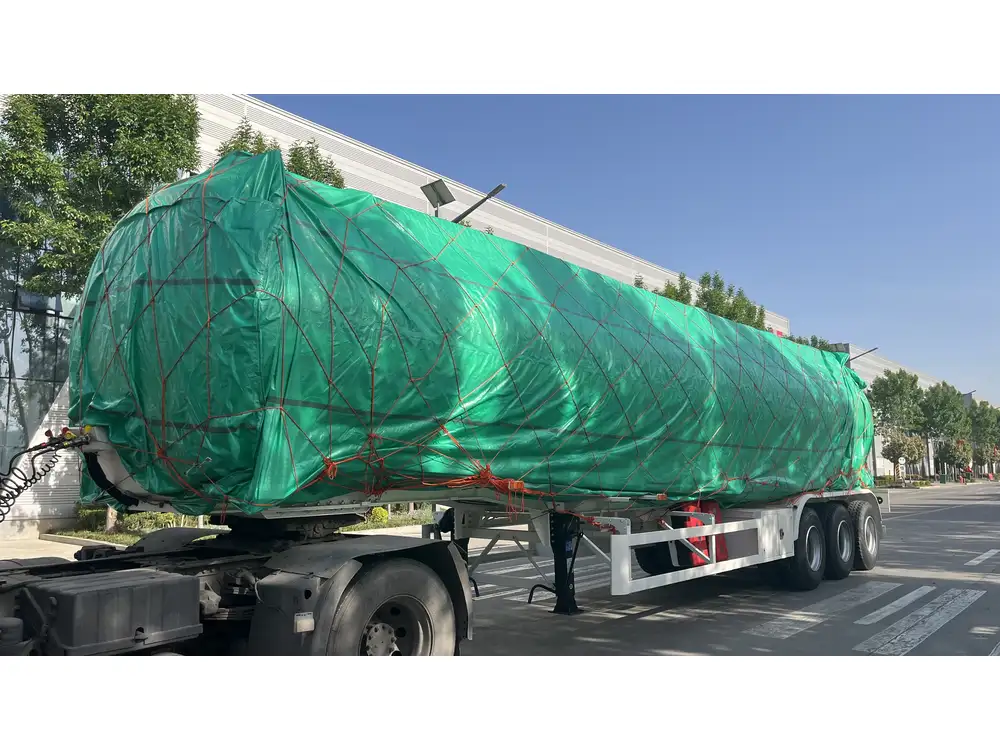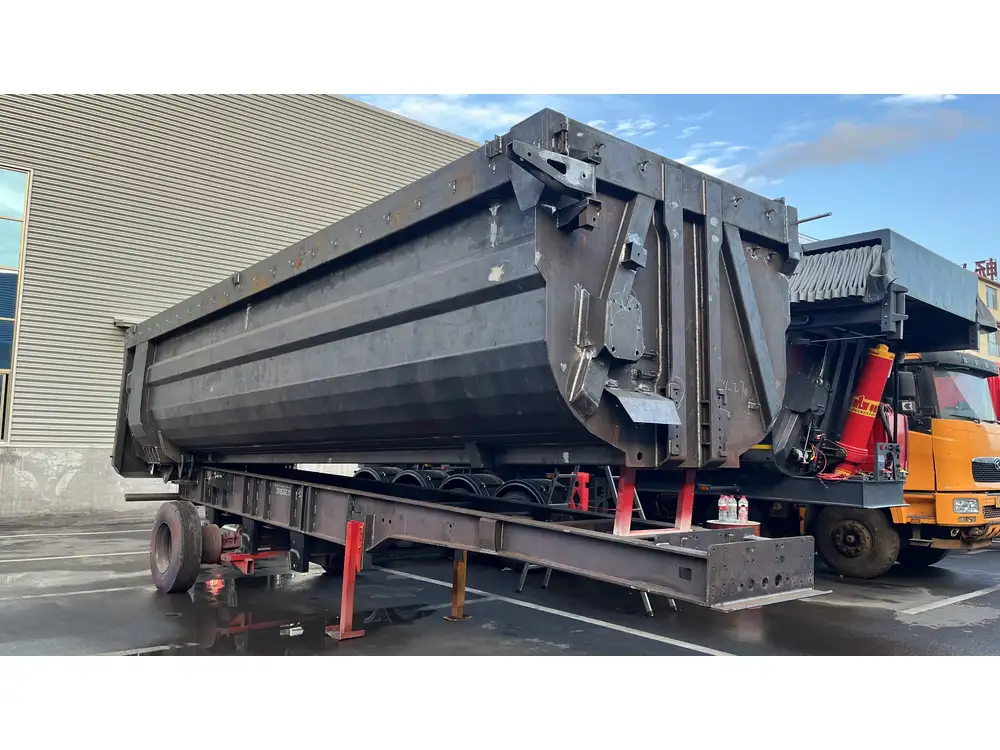Transporting goods efficiently and safely requires not just the right equipment but also a thorough understanding of how to maneuver a semi-trailer. As a leading manufacturer of semi-trailers, we recognize the challenges operators face in various scenarios, from navigating tight corners to reversing into loading docks. This guide aims to provide detailed insights into effectively maneuvering semi-trailers, ensuring safety and operational efficiency.
Understanding the Basics of Semi-Trailer Configuration
Key Components of a Semi-Trailer
- Tractor Unit: The front part of the vehicle, containing the engine and driver’s cabin.
- Semi-Trailer: Typically consists of a chassis with wheels and a cargo area that connects to the tractor unit.
- Fifth Wheel Coupling: The mechanism that connects the semi-trailer to the tractor unit, allowing for relative movement.
- Axles and Suspension: These components affect stability, load distribution, and overall handling.
- Braking System: Ensuring effective stopping power is crucial for safety, particularly in emergency scenarios.

Dimensions & Weight
Understanding the dimensions and weight distribution of the semi-trailer is vital for maneuverability. A typical semi-trailer can range from 28 to 53 feet in length, with varying heights and weights depending on the type of cargo. It’s essential to consider:
- Length: Longer trailers require more space to turn.
- Width: Wider trailers may face challenges in narrow lanes.
- Weight Distribution: Uneven loads can affect stability and turning capability.
Safety First: Pre-Maneuver Checklist
Before attempting any maneuver, ensure the following:
| Item | Action |
|---|---|
| Driver’s License | Verify that the operator has the proper license. |
| Vehicle Inspection | Check brakes, lights, and tire pressure. |
| Load Securement | Ensure the cargo is properly secured. |
| Surrounding Area | Inspect the maneuvering area for obstacles. |
Techniques for Effective Maneuvering
Maneuvering a semi-trailer involves various techniques that depend on the environment and circumstances. Here, we delve into the specific tactics crucial for making turns, reversing, and navigating tight spaces.

Making Turns
Wider Turns vs. Tight Turns
- Wider Turns: When making a wider turn, adjust the steering wheel gradually, allowing the trailer to follow the tractor safely.
Tight Turns: For tight spaces, begin with a wider approach and use the following techniques:
- Slow Down: Reduce speed well before the turn.
- Use Reference Points: Cut towards the curb or edge of the road to create more turning radius.
- Counter-Swing: Allow the rear of the trailer to clear the obstacle before straightening out.
Tips for Left and Right Turns
- Left Turns: Generally considered more challenging due to the angle of the trailer; increase the distance from the curb to allow the trailer to clear it.
- Right Turns: Watch for pedestrians and cyclists; ensure the trailer doesn’t clip traffic barriers or nearby vehicles.

Reversing and Parking
Reversing a semi-trailer requires precision. Use the following guidelines to execute a successful reverse maneuver:
- Set Mirrors Correctly: Adjust outside and interior mirrors to have an unobstructed view of the trailer and surrounding area.
- Guide with Hand Signals: If available, use a second person to assist with guiding the vehicle.
- Use the Tandem Axles: The trailer will pivot around the trailer’s axles. Therefore, remember that turning the steering wheel right will move the rear of the trailer left, and vice versa.
Straight Backing Techniques
- Keep it Straight: Look straight back over your shoulder, maintaining focus on a reference point.
- Correcting Deviations: If the trailer begins to veer, gently adjust the steering wheel in the opposite direction.
- Practice: Use open spaces to practice backing in a straight line before attempting parking.
Navigating Tight Spaces

City Driving and Docking
Driving in urban environments with a semi-trailer presents unique challenges. Here are critical considerations:
- Traffic Patterns: Be aware of local traffic laws and peak hours. Know when to avoid heavy congestion.
- Narrow Streets: Use turn signals well in advance and allow for extra space when passing through narrow lanes. Make sure to utilize the mirrors extensively.
- Docks & Loading Zones: Approach docks at a slight angle to make entry easier, and take the time to assess different vehicle positioning for optimal loading.
Off-Road Capabilities
For those needing to navigate unpaved surfaces, semi-trailers designed with rugged configurations can enhance maneuverability.
Common Challenges and Solutions
Understanding the typical challenges faced while maneuvering semi-trailers allows drivers to better prepare for and mitigate these issues.
| Challenge | Solution |
|---|---|
| Limited Visibility | Use additional mirrors and cameras. |
| Hydraulic Jack-knifing | Ensure smooth acceleration and braking. |
| Unpredictable Weather | Adjust driving technique according to road conditions. |

Situational Awareness
Maintaining awareness of drivers’ surroundings can prevent accidents. Regularly scan mirrors, keep an eye on pedestrians, cyclists, and avoid sudden movements.
The Role of Technology
Modern Maneuvering Aids
Recent advancements in technology have greatly enhanced semi-trailer maneuverability. Operators should become familiar with:
- Blind Spot Monitors: Alert drivers of nearby obstacles or vehicles not visible in mirrors.
- Reversing Cameras: Offer clearer perspectives while reversing.
- GPS Navigation Systems: Help in route planning and identifying potential hazards.

Training Programs
To ensure drivers are well-equipped for maneuvering semi-trailers, companies should invest in:
- Simulation Training: Recreate driving scenarios to practice maneuvers without risk.
- Regular Workshops: Update drivers on the latest techniques and technologies in semi-trailer operations.
Final Thoughts
Mastering the art of maneuvering a semi-trailer is essential for every driver in the logistics and transportation industry. By understanding the intricacies of trailer dynamics, employing effective techniques, assessing challenges proactively, and leveraging technological advancements, operators can navigate any environment with confidence.
Whether embarking on short hauls or long-distance deliveries, proper training and situational awareness will drastically reduce the likelihood of accidents, ensuring the safety of the driver, cargo, and others on the road.
Invest in skills development, embrace technological changes, and always prioritize safety—these actions will lead to unparalleled efficiency and effectiveness in semi-trailer operations.



